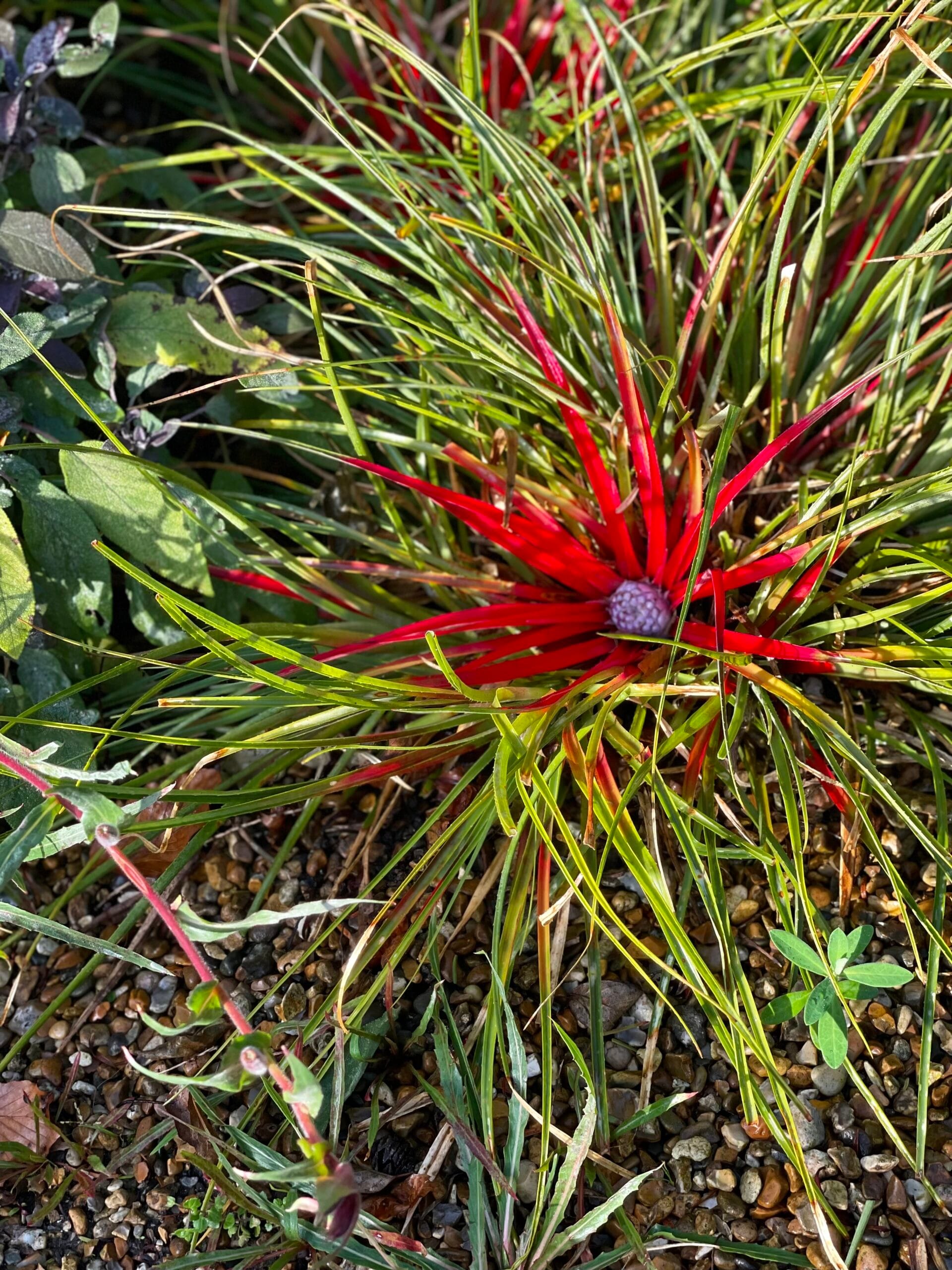
In late 2018 and early 2019, as he was cleaning out the vast debris in the Dutch lights greenhouse, Denmans Garden then Head Gardener Graham Best discovered a variety of interesting plants. Originally used to grow soft fruit and veg for market, Mrs Robinson latterly used the Dutch Lights to display her impressive collection of tender exotic plants and as Graham discovered, many of them survive.
Among his discoveries were three enormous crimson bromeliads (Fascicularia bicolour), one of which easily measures two metres (7 feet) in circumference and 90 cm (34 inches) tall. A member of the pineapple family (Bromeliaceae), this unusual bromeliad grows along on the exposed coastline, under trees in the temperate rainforests and up into the mountains of its native Chile. It is one of the hardiest bromeliads in the world and one of the few that is hardy here in the southern part of England as it can withstand temperatures down to -5C (23F) with some protection.
The crimson bromeliad forms clusters of rosettes made up of slightly serrated, slender grass-like leaves that can grow up to 50cm (20 inches) long. In late summer the centre portion of the evergreen leaves become a bright scarlet crimson and a circular mound of blue flowers with golden stamens develops in the centre.
 A relatively long-living plant (it is possible our main specimen was planted by Mrs Robinson before she died in 1996), its Latin genus name, Fascicularia, means ‘clustered together in bundles’ and the specific epithet, bicolour, means just that. It’s more hilarious (if apt) nickname is ‘baboon’s bottom’, a nice bit of trivia if you are stuck for conversation at a horticulturist’s dinner party.
A relatively long-living plant (it is possible our main specimen was planted by Mrs Robinson before she died in 1996), its Latin genus name, Fascicularia, means ‘clustered together in bundles’ and the specific epithet, bicolour, means just that. It’s more hilarious (if apt) nickname is ‘baboon’s bottom’, a nice bit of trivia if you are stuck for conversation at a horticulturist’s dinner party.
While most bromeliads grow in trees, Fascicularia bicolour is terrestrial. It is drought tolerant when established, can grow full sun and part shade and prefers average, gritty, and well-drained soil. If you grow it in a pot, you may want to bring it into a cold greenhouse for winter protection. Wet and damp can cause its crown and leaves to rot so take care not to drown it either.
Graham took a few rosettes off the mother specimen and planted them in the gravel in the Walled Garden and in front of the Cottage in 2019 and both plants have flourished as you can see from the photos!






